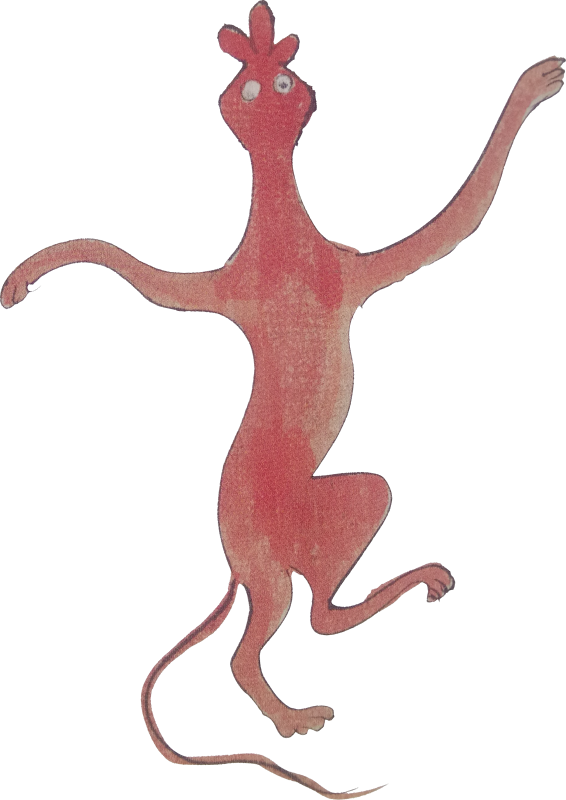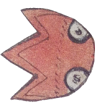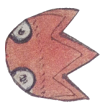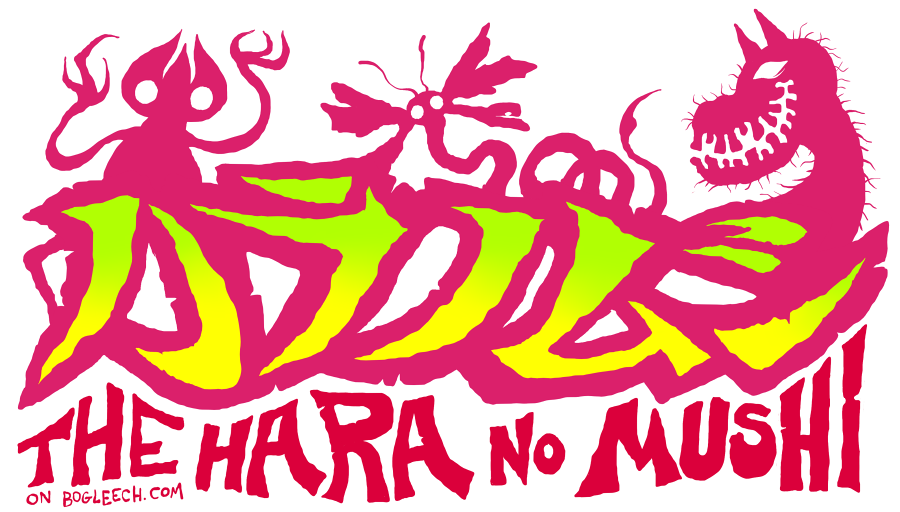
DAY FOURTEEN: HIZOU NO MUSHI
("Spleen Bug")
Written by Jonathan Wojcik, Researched and Translated by Rev Storm
Design Review:
This is totally a kitty cat this time! A kitty cat with a weird nematode head! I love that the mouth sticks straight up again, and that it's in the "tottering" pose from its description. What a freaky, menacing character, the perfect personification of the symptoms it causes!TODAY'S REAL WORLD PARASITE:
Toxoplasma gondii
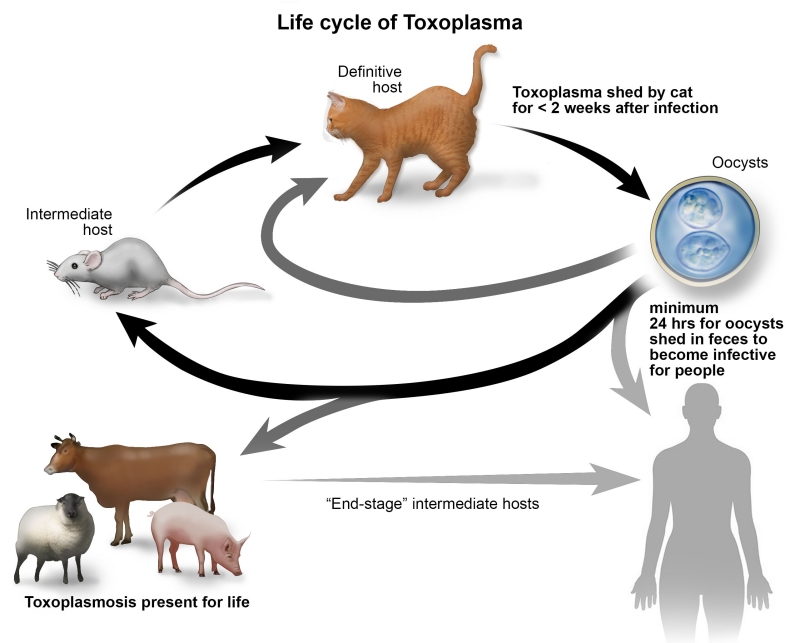
Today's parasite is our first single-celled protozoan, and has become increasingly famous in recent years under the popular claim that it may increase the risk of schizophrenia and other mental illness in human hosts. It's an exciting and dramatic narrative to spook the public with, indeed, that we may suffer from a "brain parasite" that messes with our thoughts and perception of reality, especially considering it can be contracted from our most beloved household pets and the media can throw in a "should've got a dog!" finger-wagging...as if there aren't some pretty nasty things you can pick up from a canine, too.
Alas, all those years of hype about the Mind-Warping Toxoplasmosis were for nothing. All anyone had ever done in the first place was suggest that there may be a link between these single-celled protozoa and schizophrenic disorders after a slight correlation was observed. However, subsequent studies have turned up absolutely nothing to suggest such a connection, demonstrating only that journalism still doesn't quite understand how to handle a "maybe" from the scientific community before it spirals out of control.
It certainly seemed like it checked out, of course, given that these protozoa did in fact evolve to affect brain function. However, the intended target of this is a rodent, not a human. In the mouse, the parasite really does remove the host's instinctual fear of cat urine, and as opportunistic scavengers, this makes the mouse likely to actively investigate the odor as it would any other pungent, organic material. The effect persists even in mice cleared entirely of the parasite, indicating that it is likely a result of long-term structural damage to their brain, and the thinking was that the organisms may damage a human brain in their attempts to do something similar.
A human, however, is not a mouse, has several times more brain matter than a mouse has an entire body, has no instinctual fear of cat urine and would not have kept it in the same place if they did. However the parasite may do what it does, it's never going to find the same circuitry to tamper with in a person as it does in Mickey. The Toxoplasmosis-Schizophrenia hypothesis, while interesting, is by now pretty much dead in the water, likely to persist only as a sort of Urban Legend for many years to come.
This isn't to say that the parasite is harmless, however. I chose Toxoplasmosis for today's entry not just because Spleen Bug appears to be feline-themed, but because there are still several symptoms shared between them. Contracted from cat feces, the protozoa can persist in a human host for months or years without symptoms, only to strike unexpectedly for several weeks of flu-like symptoms including fever and muscle pains. In severe cases, especially with a compromised immune system, the host can suffer blurred vision, brain inflammation, seizures, confusion and loss of coordination. It is again quite impossible for the illustrator of "Spleen Bug" to have known about the affects and life cycles of completely microscopic parasites...but this one's getting a little uncanny, isn't it, considering this is the only Hara no Mushi to resemble a cat? I can once again only ascribe this to the fact that there are simply enough parasites and diseases out there for some of these to match up incredibly well.
Fortunately, Toxoplasmosis is curable, and in most, it's thought to never manifest any symptoms at all before it has its run and dwindles from the body. We are, after all, entirely the wrong host, and generally a "dead end" in the organism's life cycle. The most serious risk is actually to developing fetuses, but so long as you don't handle animal feces of any kind while pregnant, and you shouldn't anyway, you can reduce that risk to nearly zero.
